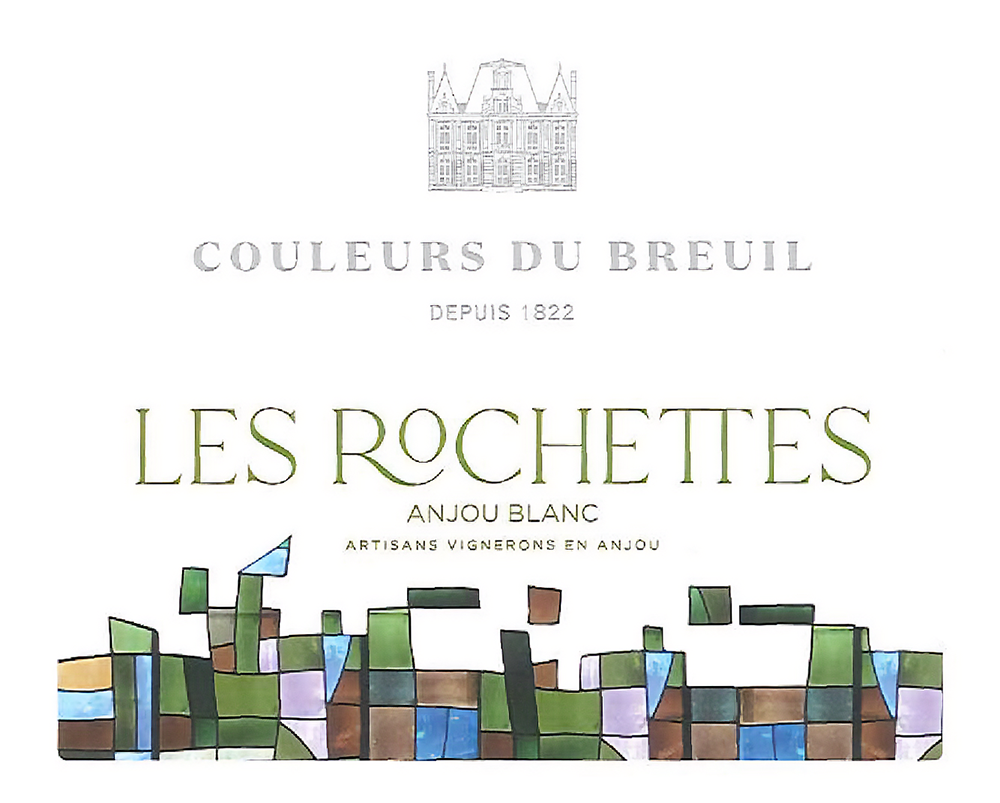Châteaux du Breuil et de la Roche
Couleurs de Breuil Anjou Blanc ‘Les Rochettes’ 2022
Châteaux du Breuil et de la Roche Couleurs de Breuil Anjou Blanc ‘Les Rochettes’ 2022
In France’s majestic Loire Valley lies Châteaux du Breuil et de la Roche, situated on the right bank of the Layon river near the village of Beaulieu-sur-Layon, 20 minutes south of Angers. Built in 1822, Le Breuil’s vineyards are located on prime L’Anjou Noir vineyards: south-facing slopes of the Coteaux du Layon, resting on a bed of schist just above a seam of spilite that runs between the towns of Beaulieu-sur-Layon and Rochefort-sur-Loire. The winery also owns a prime vineyard across the Loire river, in the heart of Savennières.
The foundation of the winery lies in their superlative regenerative, certified-organic farming methods. The team has been working without the use of herbicides, pesticides or chemical fertilizers since 2007, receiving their organic certification in 2015. The Breuil team also utilizes native hedges, trees, and low stone walls as natural windbreaks and as pathways for wildlife to enter the vineyards from the forest. The resulting soil health is remarkable—turning over the soil in the Breuil vineyard reveals a rich network of mycelia (fungal organisms), earthworms, insects, and native ground cover, such as wild onion, garlic, and clover, among many others.
The name ‘Rochettes’ comes from the original parcel in Anjou that inspired the blend of 80% chenin blanc, 10% chardonnay, 10% sauvignon blanc and gris. Les Rochettes is now the estate blend of white vineyards between the villages of Beaulieu-sur-Layon and Rochefort-sur-Loire. Vineyards are planted on green sandstone shale with red schist on a schisto-sandstone subsoil. Les Rochettes offers unbeatable value for a complex cuvée made entirely from Coteaux du Layon vineyards.
Vinification – The philosophy in the cellar is to protect and retain the purity of the fruit with as minimal intervention as possible. They use only the coeur du cuvée, the heart of the first pressing, for their estate wines. At harvest, each vineyard is monitored carefully for the desired balance, as they are always looking for the utmost elegance. Whole bunches are sorted first in the vineyard into small crates and then brought to the winery, where they are carefully washed to avoid the introduction of Brettanomyces (a necessary step to preserve fruit and vineyard character) and then sorted again by hand. Only the healthiest, best bunches make it into the fermentation tank. Bunches are picked and sorted in the vineyard in small crates. After crushing, alcoholic and malolactic fermentation take place in stainless steel vats. Aging occurs on the lees for six months in tank, and only the minimum amount of sulfur dioxide possible is used during élevage and at bottling.


